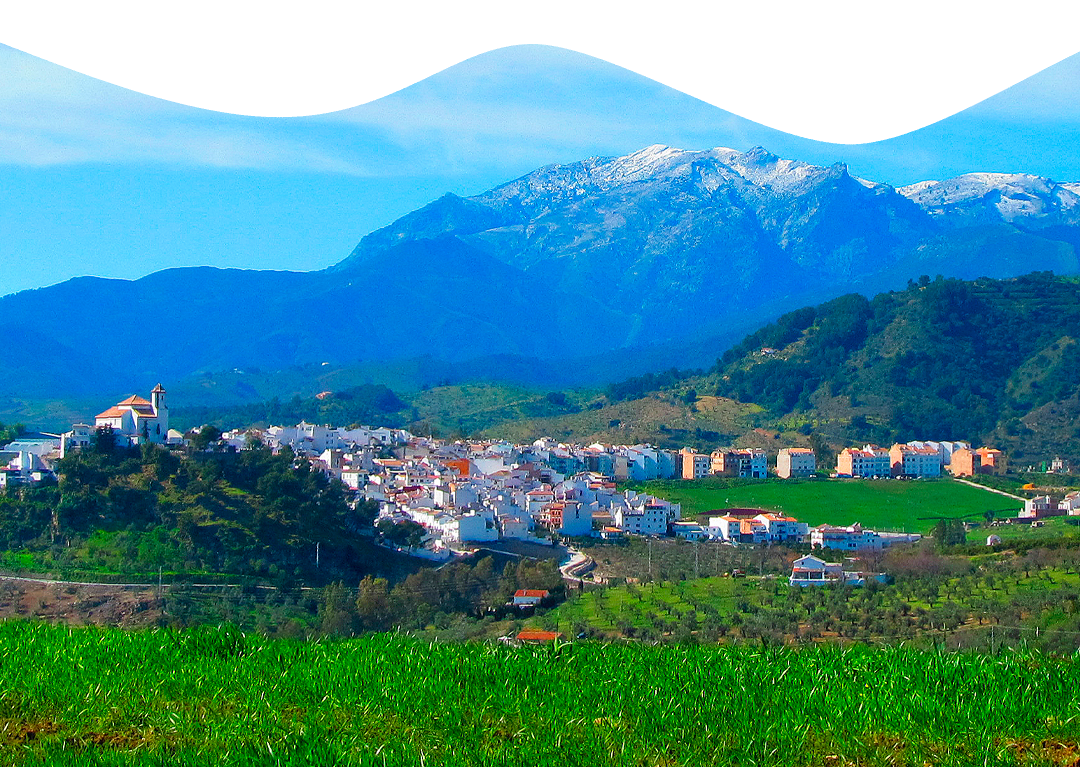


It is also known as "The Plaza" by the town's inhabitants, and is located in the center of the town. The square is a spacious and bright public space, surrounded by historic and emblematic buildings, and it is the place where most of the town's cultural and festive events and activities are held.
The history of the Plaza de la Constitución dates back to century XVIII, when the building that today houses the Alozaina Town Hall was built on one of its sides. From then on, the square became a busy public space, where all kinds of events and festivities were celebrated. In the 19th century, the bandstand which is still preserved today in the center of the square, and which is one of its most emblematic elements.
According to legend, María Sagredo, who was then a local noble, organized the defense of the town along with other local leaders. To stop the invaders, he used bee hives which were thrown from the castle walls, causing the Moors to flee the place.

Click play NOW
Watch a video
It is a niche that is located in a white wall and is framed by a brick arch. Inside, there is a cross and an image of the Virgin Mary.
The niche is located on Cruz Villa Street, which extends from the Plaza de la Constitución to the Church of Santa Ana. It is one of the oldest streets in the town and is full of history and tradition.
According to local history, the niche was built in the 18th century, and its purpose was protect the townspeople of plague and other natural disasters. Many people visit the niche to pray and ask for protection from the Virgin Mary.
Additionally, the Hornacina Cruz Villa is an important symbol of the identity and history of Alozaina, and is one of the many religious buildings found in the area.
This park is known for offering a stunning panoramic view of the Sierra de las Nieves and the Guadalhorce Valley, making it a very popular spot among tourists and residents alike.
The park has a series of trails and paths that extend throughout a large green area, offering an ideal space for walking, hiking or simply enjoying nature. In addition, it has a picnic area and several benches and viewpoints where visitors can relax and enjoy the stunning views of the landscape.
The park was built in the 80s and has become an emblematic place for the people of Alozaina. In addition to its natural beauty, the park is a place where area residents gather to celebrate festivals and other community events.

Click play NOW
Watch a video
The Church of Santa Ana de Alozaina is one of the most emblematic buildings in the town and has a long history. The construction of the Church began in century XVI, on the remains of an old mosque, as was common in many towns at the time after the Christian conquest.
Over the following centuries, various extensions and renovations were made to the temple, until in the 19th century the current bell tower was built and the main façade was completed. During the Spanish Civil War, the Church suffered significant damage, including the loss of a large part of the artistic and religious heritage that was housed inside.
After the war, the Church was restored and various reconstruction and conservation works were carried out. Currently, the Church of Santa Ana de Alozaina has a beautiful baroque main altarpiece, made in the 18th century, and a valuable collection of religious images of various styles and periods. In addition, it is the venue for the town's Holy Week, which has numerous processions and religious celebrations throughout the week leading up to Easter.

Click play NOW
Watch a video
Solana and Corrales streets are two of the most emblematic streets of the municipality. Both streets are located in the oldest part of the town, and have great architectural and cultural wealth.
Solana Street is a narrow, cobbled street that owes its name to the fact that it faces south, therefore receiving more sun. Along this street you can find numerous old houses, some of them with more than 200 years old, and which are a good example of the traditional architecture of the area. On Solana Street there is also the Calvary hermitage, dating from the 18th century.
For its part, Corrales Street is a street even narrower and steeper than Solana Street, and owes its name to the fact that it was formerly used as a transit point for cattle. Along this street you can find traditional houses, some of them with corrals or interior patios that served as a storage place for agricultural products.
Both streets are very popular with tourists and visitors who come to Alozaina, as they preserve the charm and authenticity of rural Andalusia.
It is known that during the time of the Reconquista, many towns in the interior of Andalusia, such as Alozaina, were surrounded by walls and defense towers to protect yourself from attacks by Muslims that were still resisting in the nearby mountainous areas.
The walls of Alozaina, which date back to the 13th century, are one of the main vestiges of this era. Currently, fragments of the walls can be seen in some parts of the town, especially in the castle area. Despite have undergone numerous modifications Over the centuries, these walls are an important historical testimony of the medieval period of Andalusia.
Its origin dates back to Roman times, when an aqueduct was built to bring water to the Roman villas in the area. The source itself dates from century XVI, when a small structure was built to protect the spring and make access to the water more convenient. In the 18th century, a renovation was carried out and the pylon that is still preserved today was built.
The Fountain El Albar It was an important water supply point for the municipality of Alozaina and its surroundings for many years. It was also used for washing clothes and other domestic uses. Today, the fountain remains a tourist attraction and a popular place for hiking and enjoying nature.

Click play NOW
Watch a video

Click play NOW
Watch a video